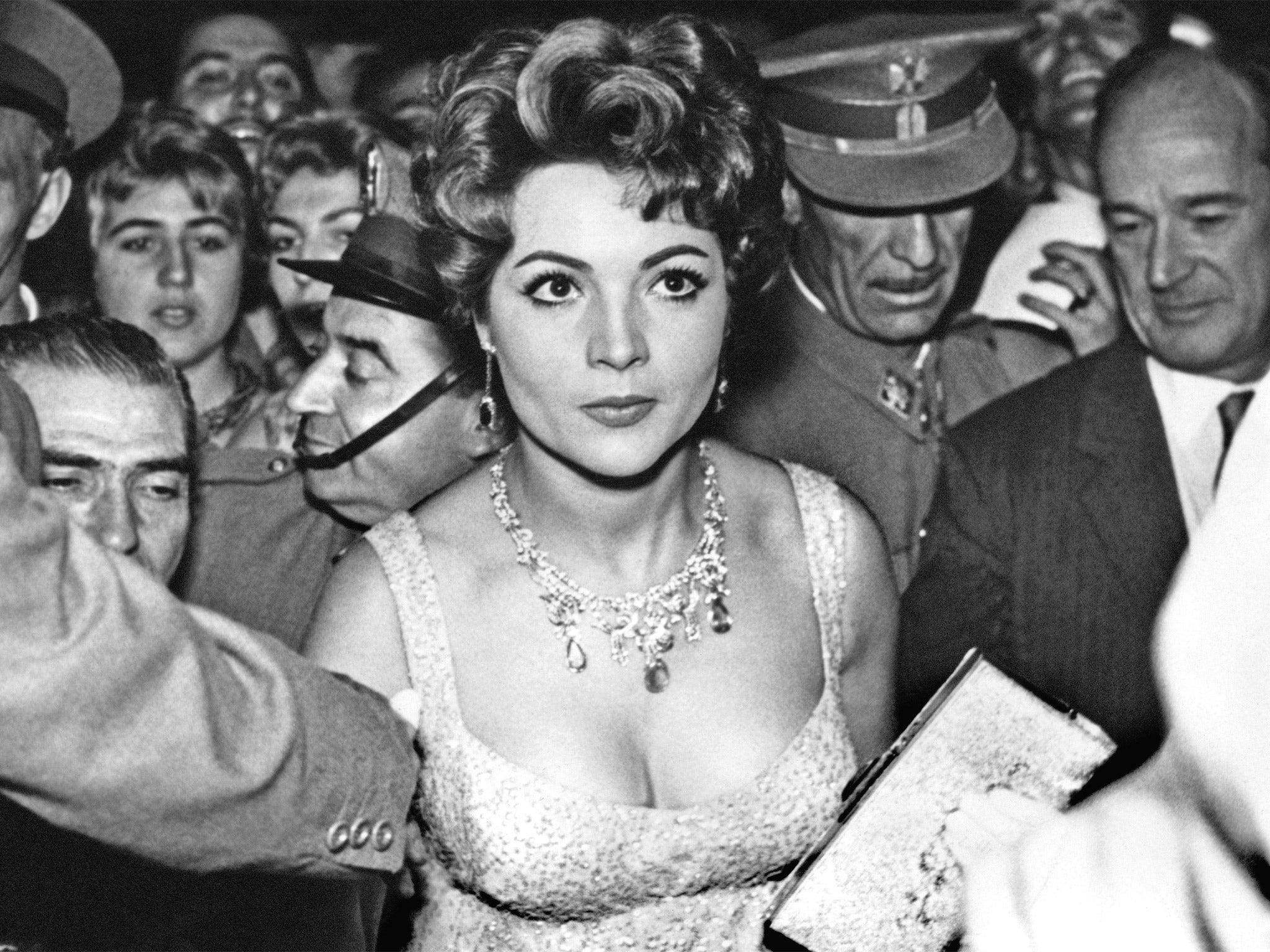Sara Montiel: Spanish film star who conquered Hollywood in the 1950s

Sara Montiel is widelyconsidered one of Spain's greatest female film stars of the 20th century: but it is perhaps more for what she managed, with huge skill, to come to symbolise than for her artistic output that she will be remembered long-term.
It is true that she was the first Spanish actress to conquer Hollywood in the 1950s, acting alongside Burt Lancaster and Gary Cooper – and her beauty helped her gain a trail of lovers and husbands that ranged from Hemingway (who taught her to smoke cigars) to the film director Anthony Mann.
But for the vast majority of Spaniards during Franco's era, Montiel simply represented everything that seemed completely unimaginable: international glamour, ridiculous affluence, and a voluptuous feminine sexuality that did not give two hoots for the country's repressive social mores. As La Vanguardia newspaper put it in its obituary, "In an era of black shawls and hard bread, she kept us in touch with the times."
Montiel's fame in Spain reached the point where for over two decades her plunging necklines, richly erotic deep voice and sensual singing of cuplés – a type of popular, often romantic song – in a series of otherwise forgettable movies acted as a kind of pressure valve for censor-bound Spanish society.
El Último Cuplé ("The Last Cuplé", 1957), a low-budget film which combined cuplés with the classic contemporary Spanish movie format (femme fatale plus willing-to-be-seduced bullfighter plus bullfighter's morally pure bride-to-be, equals sweeping melodrama) was the biggest of her box-office smashes. Its title song, "Fumando Espero" ("I wait whilst smoking"), recorded in a voice that the producer insisted Montiel made so husky and low she protested she would end up sitting underneath the piano, remained a major hit for years afterwards.
But as much as what she did or how she looked, what fascinated Spaniards was who she knew – which in 1950s Hollywood was just about everybody. In the last photo of a living James Dean, he is next to Montiel, both of them laughing. Friends included Elizabeth Taylor, Billie Holiday and Brando.
Her list of lovers, affairs and broken hearts stretched from Dean (whose fatal car crash happened after "an afternoon of love" with her, or so she claimed), to playwright Miguel Mihura, Indalecio Prieto, one of the top ministers in the former Spanish Republic, and even the 1959 Nobel Prize-winning biologist, Severo Ochoa. (Montiel described him as "the great love of my life... but him researching all day and me making films all day just didn't match.")
For ordinary Spaniards, another appealing side of Montiel was her working-class background. Montiel was born and brought up in Campo de Criptana, a tiny town on the empty plains of central Castille, before moving to the Valencian coast as a teenager. Her father's income was so meagre as a field worker, she later claimed that she would dig up roots to eat. (If this recalls Scarlet O'Hara grubbing for potatoes in Gone with the Wind, then it would not be the first or last time that fact and fiction blurred in her life.)
Discovered when singing a religious song by film producer Vicente Casanova in 1944, aged 15, her first film was Te Quiero Para Mí ("I Want You for Me"). Six years and 14 films later, including successes like Locura de Amor ("The Madness of Love", 1948), she started working in Mexico, performing mostly singing roles. Piel Canela (1953), in which she played a gangster's moll in a Havana nightclub, saw her shoot up the ladder to Hollywood's top circle of film stars, despite not speaking a word of English – the first Spanish actress ever to do so.
Together with Gary Cooper (with whom she had a much-publicised romance) she took part in the Western Vera Cruz (1954) and then, while playing a secondary role in Joan Fontaine's Serenade, she met and fell in love with Anthony Mann. Their wedding, as it was a civil one, was downplayed in Franco's Spain, as was the divorce in 1961 – in stark contrast to when she married Spanish businessman Jose Vicente Ramirez in 1964 in a massive Catholic church ceremony. (The fact that it only lasted a couple of months before they separated was discreetly ignored).
By then, her cachet as a sex symbol had mushroomed thanks to El Último Cuplé, which kicked off a series of films – La Bella Lola ("Beautiful Lola", 1962), Noches De Casablanca ("Casablanca Nights", 1963), La Dama de Beirut ("The Lady of Beirut", 1965) – which, if unremarkable in their content, gave Montiel a vast following of fans in Spain.
The end of the dictatorship in 1975, though, meant that her appeal suddenly shrank; but Montiel made the perfect sideways move. She began a seemingly interminable series of TV chat show appearances, while well-timed interviews with "intimate revelations" in gossip magazines kept her star from fading.
As if that were not enough, she wrote biographies with suggestive titles like Sara and Sex (2003); sung rap music in her seventies; and, in 2002, married a Cuban film producer 36 years her junior – all of which helped to ensure that she maintained a certain presence.
"I am not your 'typical woman'," she said last year. "Not at all. I am 84 and I don't have a lot of time left. But in the last 54 years there's been nobody like me."
Alasdair Fotheringham
Sara Montiel actress and singer: born Campo de Criptana, Spain 10 March 1928; married 1957 Anthony Mann (divorced 1961); 1964 Jose Vicente Ramirez Olalla (divorced 1978); 1979 Pepe Tous (died 1992, two adopted children); 2002 Tony Hernández (divorced 2005); died Madrid, Spain 8 April 2013.
Subscribe to Independent Premium to bookmark this article
Want to bookmark your favourite articles and stories to read or reference later? Start your Independent Premium subscription today.

Join our commenting forum
Join thought-provoking conversations, follow other Independent readers and see their replies